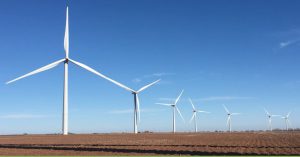
The City of Austin has made considerable efforts to reduce the community’s carbon emissions. Austin Energy, a City-owned electric utility, is on track to meet or even exceed its goal of generating 65% renewable energy by 2027. Austin Energy is making progress to stop energy generation from its power plants that emit large amounts of carbon. The City is also working to help the community reduce transportation emissions. However, it is unclear if the City will reduce transportation emissions enough to meet its goal for a carbonneutral community by 2050. The City can do more to promote electric vehicles to advance the community’s progress toward carbon neutrality.
Governments, businesses, non-profits, and individuals worldwide are working to reduce carbon emissions. Carbon emissions contribute to global warming and climate change, leading to higher temperatures and more extreme weather events around the world. Carbon emissions come from many different sources. Power plants, gas-powered cars, and trash in landfills are some sources of carbon emissions. In August 2019, City Council declared a climate emergency. Part of the City of Austin’s strategy to address the climate emergency is to reduce carbon emissions. The City has two carbon-reduction goals. The first goal is for municipal operations to be carbon neutral by 2020. The second goal is for the Austin community to be carbon neutral by 2050.1 The City has made progress toward achieving carbon-neutral municipal operations by 2020. Municipal carbon emissions dropped significantly in 2011 and 2012 because the City switched to 100% renewable energy for City operations. Additionally, the City is on track to meet its goals to electrify some of the City’s vehicles by 2020.
1.Austin Energy is reducing carbon emissions from energy generation on track with the goal to be a carbon-neutral community in 2050
Austin Energy generates energy from several different sources – coal, natural gas, nuclear, and renewable. Coal and natural gas produce large amounts of carbon emissions. Nuclear energy does not produce carbon emissions, but it is not renewable. Renewable sources, primarily wind and solar, do not produce carbon emissions.2 The amount of energy generated from each source at a certain time varies due to the need for energy, weather conditions, and other factors. Austin Energy must increase renewable energy generation and reduce generation from its sources that emit large amounts of carbon to stay on track for the 2050 carbon neutrality goal. Austin Energy is increasing its percentage of renewable energy generation and is on track to meet or even exceed its 2027 renewable energy goal. The Austin Energy Resource, Generation, and Climate Protection Plan to 2027 (AE 2027 plan) directs the City’s efforts to increase renewable energy and close power plants that emit large amounts of carbon. The AE 2027 plan sets a goal for Austin Energy to have 65% renewable energy generation by 2027. On average, Austin Energy’s energy generation was 37% renewable from October 2018 to July 2019.
2.The City has efforts in place to reduce transportation emissions. However, it is unclear if the City will reduce transportation emissions to the extent needed to meet the 2050 carbonneutral goal.
Austin is a city that relies primarily on gas-powered cars to move around. About 75% of Austin residents commute to work by driving alone. A primary way to decrease transportation emissions is for people to drive alone in gas-powered cars less often. This also has the potential to support other critical City goals, such as reducing congestion and car accidents. The Austin Strategic Mobility Plan set a goal in 2019 to reduce the number of people driving alone to 50% by 2039. This effort will require changes to Austin’s transportation infrastructure. The Austin Transportation Department (ATD) has strategies to invest in additional infrastructure such as sidewalks, bike lanes, and transit. These infrastructure changes are part of the strategies in the Austin Strategic Mobility Plan to work toward the goal of people driving less. Infrastructure changes are often long-term projects. These changes require significant time, money, and coordination with other entities. The Austin Transportation Department also has programs to encourage people to change their habits. ATD runs an incentive program to encourage City employees to commute in ways other than driving alone. In addition, ATD works with an organization called Movability. Movability is a transportation management association that helps employers in Austin develop commute plans for their employees to drive alone less. ATD also has a public outreach program, Smart Trips, to help people learn about transportation options other than driving alone.
To further the City’s progress to be a carbon-neutral community, the Office of Sustainability should ensure that innovative strategies to promote electric vehicles are considered as part of the process to update the Austin Community Climate Plan. The Office of Sustainability should ensure that responsibility for implementing these strategies is assigned to the appropriate entity. Potential strategies include:
• offering rebates for electric vehicles;
• establishing an electric vehicle-ready ordinance; and
• encouraging large employers to electrify their fleets.
Austin-Bergstrom International Airport and Austin Energy unveil large Community Solar project atop parking garage